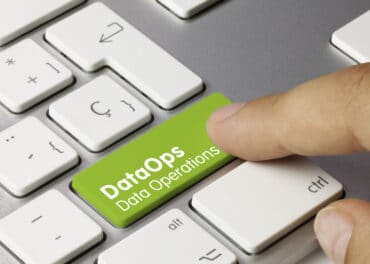
Advice for developing a continuous intelligence strategy to support digital transformation, reliability, and security efforts.
Every business operating today must transform into a digital business or risk being disrupted. The transition to digital operations requires special attention be paid to reliability, security, and the user experience when engaging the business.
The transition generates an unprecedented volume of data from every touchpoint, customer interaction, and digital connection across the entire business and its ecosystem. Businesses can use continuous intelligence derived from the rapid analysis of that data to make smart decisions while events are happening. Specifically, continuous intelligence brings meaning to real-time data.
Download Report: Why Continuous Intelligence? Why Now?Recently, RTInsights editor Joe McKendrick sat down in a series of interviews with Sumo Logic CTO and Co-Founder Christian Beedgen, who provided advice for developing a continuous intelligence strategy to support digital transformation, reliability, and security efforts. Here are some of the key points from their discussions.
Continuous Intelligence and Digital Transformation
Thanks to the disruptive nature of the pandemic, many businesses accelerate their digital transformation efforts. That transformation changes the way IT delivers services and capabilities. And that, in turn, places a lot of pressure on IT.
There are two main challenges, according to Beedgen. One is the changing technology, and the other is related to changing culture. With regard to technology changes, he noted that: “not only is infrastructure changing, but the way that the applications are built to conduct the digital business right on top of it has also been changing.”
And on top of this new type of infrastructure, you now have new deployment, abstractions, and Kubernetes. They are used to build and efficiently deploy today’s large, distributed applications. And all of this enables you to build fantastic things with increasingly fewer people.
But he noted that the depth of understanding that people need to have is just staggering due to complexity. And that creates all sorts of challenges for traditional IT. And so, digital transformation is also an IT transformation.
With regard to the cultural changes, Beedgen said: “Many of the things we have been doing quite successfully over maybe the last 20 plus years in software development have shifted. They have transformed from the classic program management office, huge process, and three-year projects. Instead of this extreme programming, we now have agile development and DevOps.” That shift is necessary because businesses must move quickly to keep pace with today’s rapidly changing market conditions.
The bottom line is that digital transformation is changing how IT delivers services and capabilities to organizations. What is needed is a continuous intelligence strategy to support digital transformation efforts. This strategy is needed because continuous intelligence is at the heart of fast-paced digital business and process optimization. It helps businesses leverage decision automation, real-time analytics, and streaming event data to better understand how their digitally-transformed operations are performing. It also provides the insights to prevent problems or quickly correct them when they occur.
Listen to the entire “Understanding Continuous Intelligence and Its Role in Digital Transformation” podcast between RTInsights and Sumo Logic’s Christian Beedgen.
Continuous Intelligence and Reliability
Today’s users and consumers of digital services and applications have incredibly high expectations for performance and availability. A single incident of an application being offline or a site page loading slowly risks the loss of revenue or a user for life.
Unfortunately, modern applications are complex, making it harder to spot problems in the making before they impact a business. And when problems do occur, the complexity makes it harder to find the cause.
As such, new ways of thinking must be applied to reliability, given the complexity of modern applications. What is needed is to move beyond traditional monitoring to observability. And to focus not on pure IT metrics but to look at the impact availability and reliability have on the customer experience. That was the main message in a second conversation between McKendrick and Beedgen.
Beedgen noted: Applications in today’s world are delivered worldwide over the internet, 24/7, by and large, delivered via a cloud. Yet, the digital experience must be good. He noted that ensuring a good experience comes down to availability and performance.
Availability is whether the site is up or down. But the reality is that it’s almost never that binary. “That’s why it’s becoming more complicated,” said Beedgen. “You are all over the world, and there are different networks, data centers, edge locations, and so forth delivering the experience. You might be up everywhere except for, I don’t know, in Southeast Asia. That’s still a part of the total availability picture. You must understand that there are many more complicated definitions of availability than just up and down.”
Performance is an equally complicated issue. The complication is that a business, especially a worldwide business, does not just have one path to monitor, Beedgen noted. There are always different gateways, traffic routes, and more depending on where a user is located in the world.
Businesses need observability based on continuous intelligence. Traditional monitoring does not help address availability and performance issues in modern applications and digital services. Continuous intelligence is an approach in which monitoring and troubleshooting are enabled through a single platform that captures metrics, logs, traces, and events, transforming them (via real-time analytics) into insights that can be correlated for situational awareness to help solve issues faster and accurately.
By leveraging multiple data sources, continuous intelligence can surface performance issues immediately, whenever they emerge. They also help instantaneously understand the root cause of problems, no matter how complex your environment is. Combined, these capabilities and insights can help address the availability and performance-related reliability challenges of modern applications.
Listen to the entire “Understanding Continuous Intelligence and Its Role in Reliability” podcast between RTInsights and Sumo Logic’s Christian Beedgen.
Continuous Intelligence and Security
Businesses need to move beyond traditional security approaches and focus on data-driven security that helps identify hidden issues and cuts through the complexity of securing modern applications. That was the main takeaway from yet another conversation between McKendrick and Beedgen.
Security has always been an important issue for businesses. And there has been a constant evolution in the methods hackers and malicious actors use. There are several news things making security harder.
First, many more compliance regulations apply to data privacy and protection. Second, it is becoming harder to find and retain qualified security professionals. And third, as noted throughout the discussions between McKendrick and Beedgen, today’s infrastructure and application environments are more complex, making it harder to see trouble in the making, spot anomalies, and deal with the flood of alerts systems generate.
Beedgen note that making matters even more challenging is the rise of security issues related to what is being called the software supply chain. “That was maybe not really that well understood in the past. It is where software products that you consume and deploy are often built on top of other software products and open-source libraries,” he said.
He noted that versioning of those things is hard. “You built your product, and you depend on a chain of libraries at a particular version, and then you need to always keep them up to date because their attack surface is large,” said Beedgen.
Continuous intelligence in a security role can help identify gaps in the security infrastructure that humans may not detect. That includes rapid response to attacks, coverage across a distributed computing environment, and the ability to deal with inputs from varied niche tools. What’s also needed is automation. Automation is one of the most effective ways to deal with the large volume of data to analyze and alerts to respond to when trying to secure a business.
Listen to the entire “Understanding Continuous Intelligence and Its Importance in Security, podcast between RTInsights and Sumo Logic’s Christian Beedgen.






